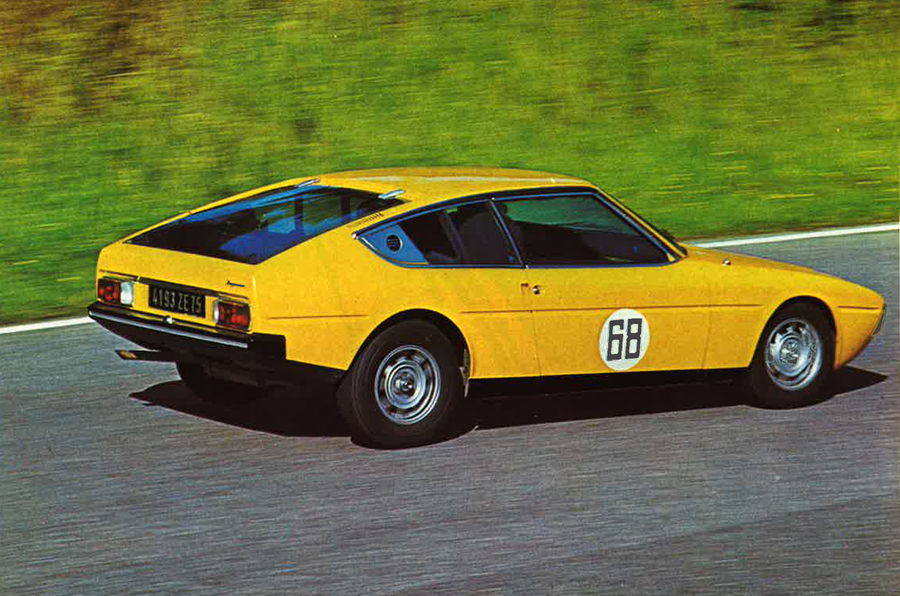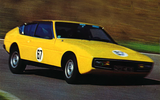At the end of 1969, conglomerate Matra, having just won the Formula 1 world championship, penned a deal with Simca, a subsidiary of Chrysler Europe and one of the biggest passenger car manufacturers in France.
This would allow Matra, already famous for its motorsport achievements, to expand its road car business following the Djet and 530 sports cars. Matra would have access to Simca's dealer network and Chrysler's engineering expertise. In exchange, Simca would take partial control of Matra's racing efforts.
The first car they were to produce would be an affordable, three-seat, mid-engined, rear-wheel-drive sports coupé with a small, naturally aspirated engine and a manual gearbox.
 That sounds brilliant, even today; imagine if Red Bull Racing, for argument's sake, teamed up with a road car manufacturer not for a squazillion-horsepower ultracar but an affordable, sensibly potent Toyota GT86 rival.
That sounds brilliant, even today; imagine if Red Bull Racing, for argument's sake, teamed up with a road car manufacturer not for a squazillion-horsepower ultracar but an affordable, sensibly potent Toyota GT86 rival.
The product that emerged in 1973 was the Matra-Simca Bagheera, a poised, handsome car – apt, given that 'bagheera' is Hindi for black panther – going up against the Alfa Romeo 1.3 GT Junior and the Opel Manta.
On 1 June 1974, Autocar's Edward Eves visited Montlhéry, France, for a test drive.
"The Bagheera's chassis shows many signs of Matra's aeronautical engineering expertise," Autocar began, citing the car's monocoque construction and web joints (rather than welded attachments) as evidence.
"The basic chassis structure is simple enough, with tubular longerons running fore and aft between strong, closed-section members at the front and rear of the passenger compartment. These sill sections and bulkheads are further reinforced by what is, in effect, a roll-over cage.
"Extensions from either end of the 'basic box' carry Simca 1100-based structures, which serve to locate the suspension and the engine/transmission unit."
 Indeed, the Bagheera's torsion-bar suspension was taken from the humble supermini, while its 1.3-litre petrol engine was lifted from the 1100 Ti, one of the earliest hot hatches. This motor provided 84bhp, peaking at 6000rpm, and 78lb ft at a high 4400rpm.
Indeed, the Bagheera's torsion-bar suspension was taken from the humble supermini, while its 1.3-litre petrol engine was lifted from the 1100 Ti, one of the earliest hot hatches. This motor provided 84bhp, peaking at 6000rpm, and 78lb ft at a high 4400rpm.




















 "It is clear that the handling and braking in no way belie the appearance of the Bagheera, although performance is in keeping with the engine size.
"It is clear that the handling and braking in no way belie the appearance of the Bagheera, although performance is in keeping with the engine size. 

Join the debate
Add your comment
I got to test drive a Bagheera back in 1980 when I was looking for something more interesting than a mainstream saloon, I quite liked it, but I was dissapointed that the steering was quite heavy, the particular car hadn't been looked after very well even though it was only 3 years old and maybe that was the problem. I didn't find another to try and got a Fiat X1/9 1300 Special Series instead, I didn't regret it.
Matra-Simca Bagheera
Matra were great and it's a real shame that they're no longer around,both the Bagheera & Murana were brilliant concepts mid engined and three abreast seating,now that's thinking out of the box,sure performance wasn't great but compared to what else was around at the time they were something special. Yes we all laughed at the Rancho after who in their right mind would buy a psuedo 4x4 that wasn't only FWD, Forty years later well who isn't offering a crossover!. Then Matra had it's partnership with Renualt producing the first proper European MPV the Espace then the unbelievable Aventime,yep true originals
Improvement
There must be someone out there who replaced the 1.3 84hp with something more exciting. The potential was there